Continuing from my last post and my visit to five of London’s high view points in a single day, after leaving St. Paul’s Cathedral, it was time to cross over the river to visit the two that are located on the southern bank of the river. The first being:
The Shard
The Shard is very different to the first three locations. It is on the southern side of the River Thames and separate from the cluster of towers around the City. It is also by far the highest so the viewing platforms at the top of the Shard provide some spectacular views of the city, as well as providing some unique views of the south bank of the river.
The viewing galleries at the top of the Shard are over 800 feet high with the overall height of the Shard being 1,016 feet, compared to the 525 feet of the Sky Garden so the Shard is significantly higher than other view points and this is very noticeable as soon as you step from the lifts and out to the viewing area. Glass covers the viewing area so taking photos without reflections and avoiding marks on the glass from an endless stream of visitors is a challenge.
The first view, looking to the east with the River Thames winding towards the isle of Dogs and the rail tracks from London Bridge Station cutting through south-east London.
View down towards City Hall:
Looking towards the old Olympic Stadium at Stratford. This view will change over the coming years with the amount of building planned for around the Olympic Park. The higher ground in the distance is beyond Chigwell and Romford.
The Tower of London:
Wider view including the City:
The Monument, a quarter of the height of the Shard viewing gallery:
The best way to appreciate the height of the Shard is to look straight down at the buildings surrounding the base – almost as if you are looking down at a model city:
Back over towards the west of the City. The three towers of the Barbican are towards the left of the photo.
St. Paul’s Cathedral from this height still stands clear of the cathedral’s immediate surroundings:
Close up view of the cathedral. Again, from this height it almost looks like a highly detailed model. The Golden Gallery is at the top of the dome:
View towards the Barbican:
From the Shard it is possible to see how railway viaducts have cut through the area immediately to the south of the river. In the following photo, Southwark Cathedral is in the very lower right of the photo. Borough Market is to the left of the cathedral.
The rail tracks run to the right across the river to Cannon Street station. To the bottom of the photo is London bridge and to the left they run to Waterloo East.
A number of the plans for post war redevelopment of London proposed transferring the train network from viaducts to tunnels under the city in order to remove the impact of these viaducts. The benefits were justified as, bringing communities together, release of space for building homes and businesses, removing the bridges from across the Thames to improve the view and use of the river.
The following photo from one of the reports shows the view of the same rail junction as above taken before the war. Despite all the proposals for transferring these rail tracks to tunnels, nothing was done after the war. The considerable cost and the financial challenges of the late 1940s and 1950s prevented any of these ambitious plans being developed – see my posts here and here.
Looking across to Waterloo and it is clear that the area between the junction at the bottom of the photo and Waterloo and Hungerford Bridge at the top is almost walled in by the railway viaduct.
View of the BT Tower and Wembley Stadium in the background. Tottenham Court Road runs between Centre Point (the building on the left) and Euston Tower (the building on the right).
As well as housing lots of communications equipment, the original primary purpose of the BT Tower was to provide a tall building in the centre of London on which microwave radio antennas (the old horn and dish shaped objects removed from the area below the old revolving restaurant) could be mounted at sufficient height to send their radio signals to a ring of radio masts around the periphery of London and from there, around the country. As well as providing the network for telephone calls and TV transmissions across the country, the BT Tower was also part of the communications network that was somewhat optimistically expected to provide communications during any Cold War attack on the country.
I will cover a bit more about this in the next post when I look at the furthest objects that can be seen from the Shard.
The view towards the south and south-east of London.
From the Shard, there is just so much detail to study. Here in the centre of this photo is Greenwich. The Observatory is to the right of centre, with the park running down to the Queen’s House and the old Royal Naval College. The dome of the Greenwich foot tunnel can also be seen.
Look further to the left of Greenwich and part of the Thames Barrier and the Woolwich Ferry can be seen. The view is across the Isle of Dogs and shows the curve of the river. The river on the west side of the Isle of Dogs can just be seen running along the bottom of the photo before curving round off photo to the right, then continuing to run eastwards towards the estuary.
The Shard viewing gallery is still a little distance from the very top of the building. The top floor of the viewing gallery is open to the weather.
Full view of the Isle of Dogs including the tallest building in the Canary Wharf development – One Canada Square. Still shorter at 771 feet than the Shard, although the view from the top of One Canada Square is excellent.
The white building of the Metropolitan Police River Policing Unit can be seen jutting out into the river at Wapping. This is the location of my post covering the Gun Tavern at Wapping. The river then bends around the area that was the location of the Surrey Commercial Docks, before curving around the Isle of Dogs.
The area above would once have been covered by the docks. The London Docks on the left at Wapping, the Surrey Commercial Docks covering the land in the centre, with the West India, South and Millwall Docks covering the Isle of Dogs.
The following extract from the 1940 Bartholomew Atlas of Great London shows the area covered in the above photo and illustrates the coverage of the docks.
Looking north across to the City. Further on, the land is relatively flat and stays below 160 feet all the way out to just north of Enfield and close to the M25 from where the land rises to almost 300 feet just north of the M25. It is this high ground we can see on the horizon in the distance.
From the height of the Shard, architectural features and building utilities can be interpreted in different ways. Here a row of air conditioning units look like rooftop dominoes.
The view from the Shard provides a fantastic 360 degree view of London all the way to the surrounding hills. I was fortunate that the weather had improved considerably since my morning visit to the Monument and the conditions were ideal to see some considerable distance.
It was now time to head for a walk along the south bank of the river to my final view-point of the day, the:
The London Eye
The London Eye is different to the previous four buildings in that the London Eye provides a moving platform to look across the city. I was working on the South Bank when the London Eye was being built and somewhere I have the negatives of photos I took of the construction.
The London Eye seems to have acted as a hub for a considerable growth in tourists and visitor attractions on the South Bank. For many years when I worked here, the area was relatively quiet. On a summer’s day, the grass would be covered with workers from County Hall and Shell Centre with limited number of walkers along the South Bank – very different to today.
The weather was perfect for a trip around with a low sun causing long shadows on the South Bank. On entering the capsule, nearly everyone else ran to the end of the capsule, before the realisation that they would be looking directly into the sun. For me, the view towards the east, south and west was perfect.
As the London Eye gradually turns, a view over the South Bank on a perfect evening:
Hungerford Railway Bridge with the new walkways on either side of the bridge. Waterloo Bridge in the background:
Close-up of the crowds in front of the Royal Festival Hall on a summer’s evening:
Starting to rise over the Shell Centre building. The viewing gallery at the top of the building is clearly visible in this photo. I was able to visit the viewing gallery and take photos across London from here in 1980. These can be found in this blog post.
Looking over to the south and the entrance to Waterloo Station:
Approaching the top of the London Eye:
At the top of the London Eye, view towards the City:
The Shard and Canary Wharf in the distance on the right:
St. Paul’s Cathedral in the sun of a summer’s evening:
The Walkie Talkie with the Monument to the right of the red crane, the start many hours earlier of my trip found these five London viewing platforms:
As with so many areas across London, this scene will change dramatically over the next few years. The nine floor office blocks that once ran around the base of the tower have been demolished and new tower blocks, mainly of the ubiquitous luxury apartments will soon surround the original Shell Centre tower.
View towards the south-west:
And to the west and the Houses of Parliament:
The old County Hall building that once housed the Greater London Council. Central court yards surrounded by office blocks.
View towards the Crystal Palace Transmitter at 719 feet high on land that is already 360 feet above sea level:
I really enjoyed visiting all these five viewing points in a single day, a fascinating alternative to walking the streets and to see the ever-changing skyline of the city, a city which still looks amazing from above.
Five locations was rather unambitious and with an earlier start and perhaps fewer stops in-between locations I could have added a further two, perhaps the new gallery at Tate Modern or for a different perspective, the tower viewing gallery at Westminster Cathedral. I suspect I will do this again in a couple of years time to see how London’s skyline has continued to change.
In one final post in the next couple of days I will take a look at what is perhaps the furthest man-made objects visible from central London – although not for much longer.


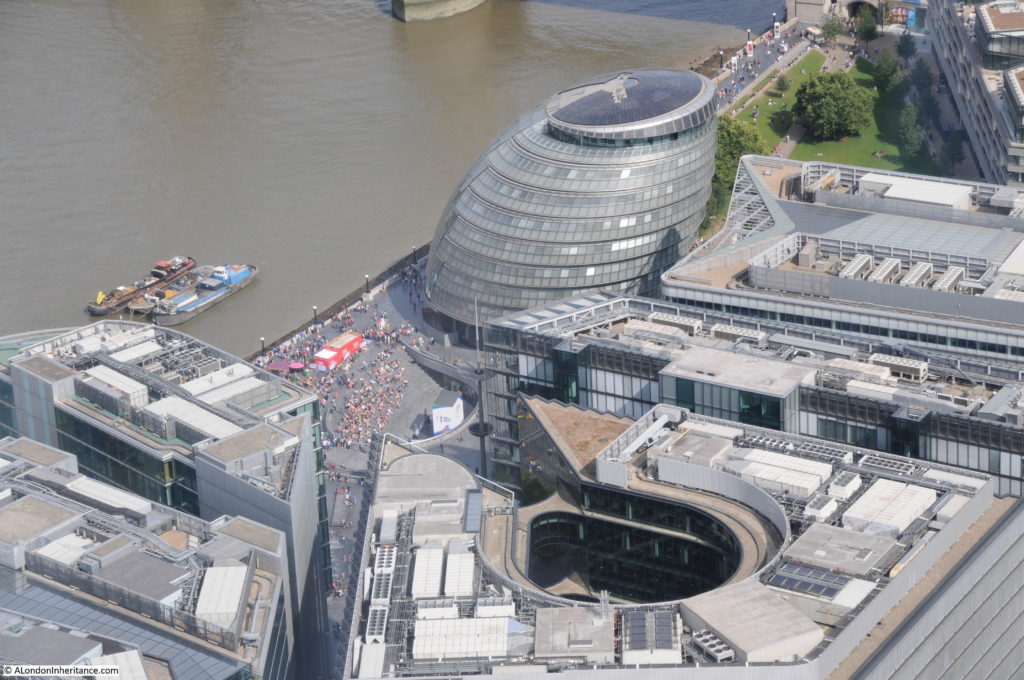


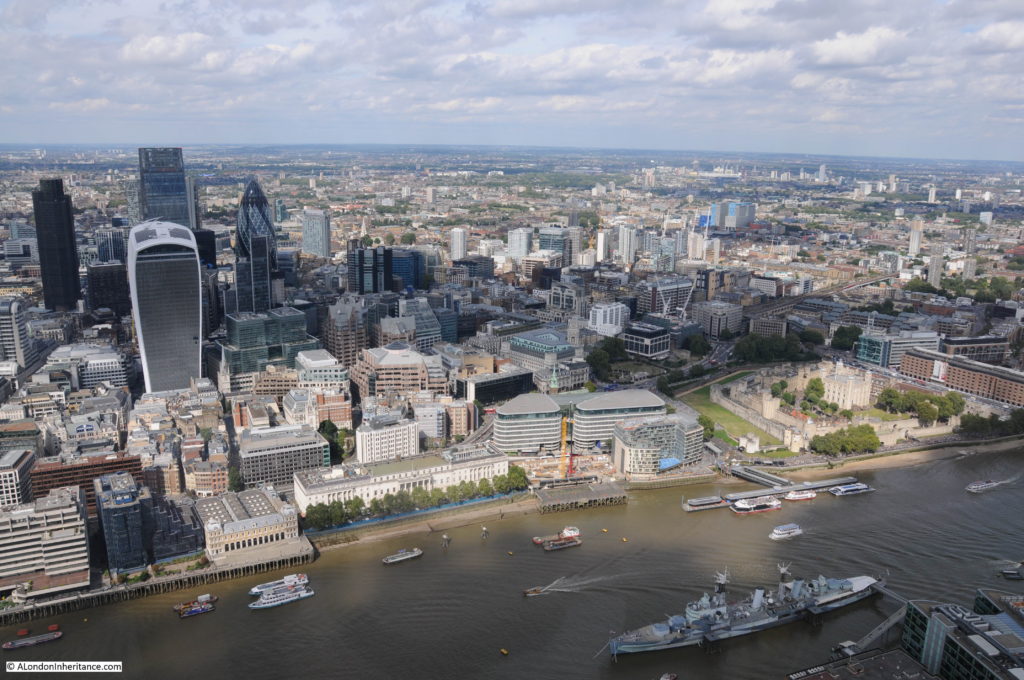





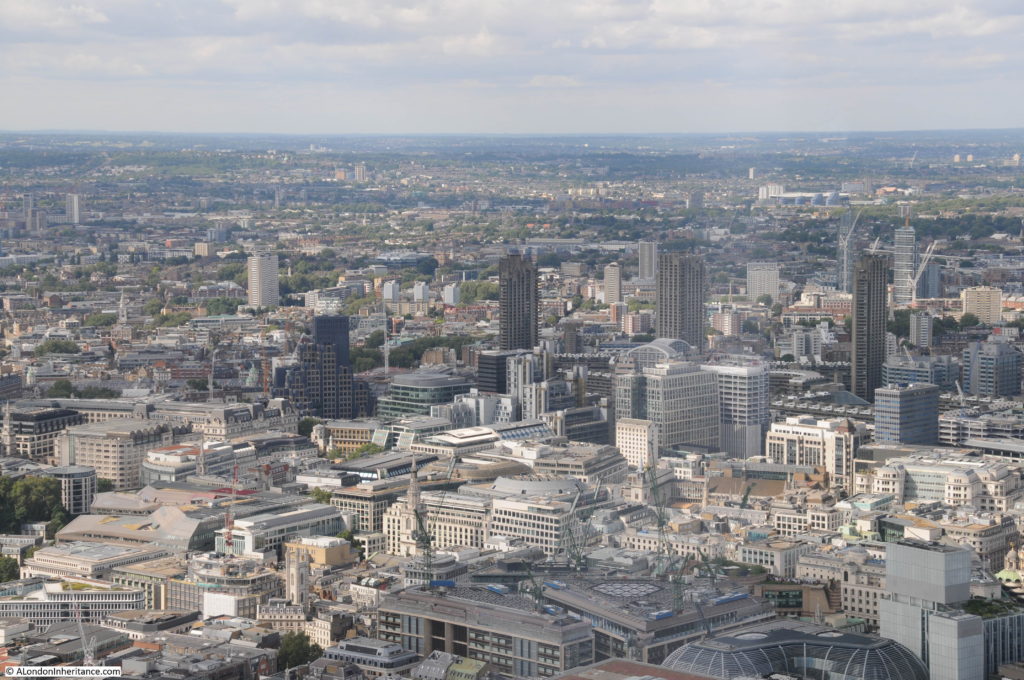

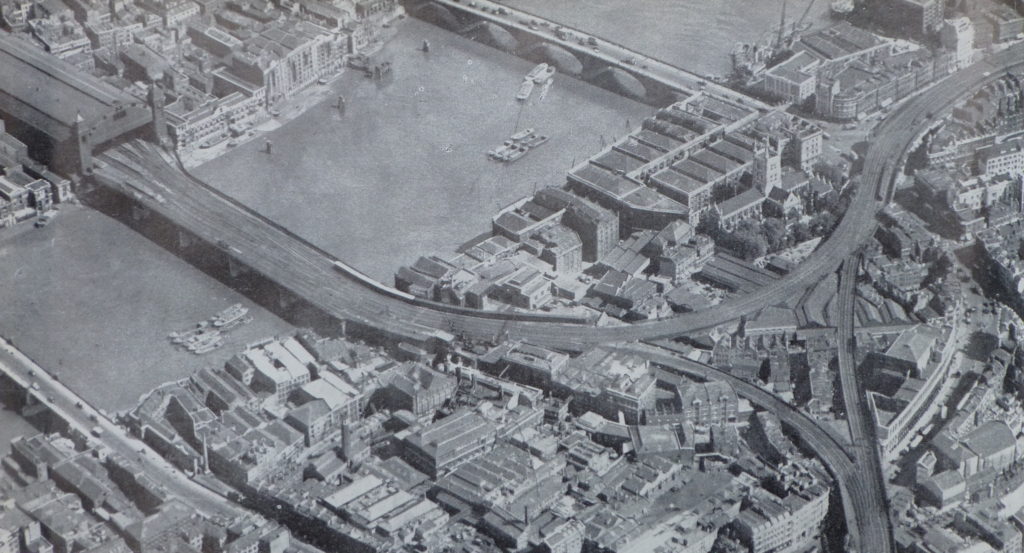


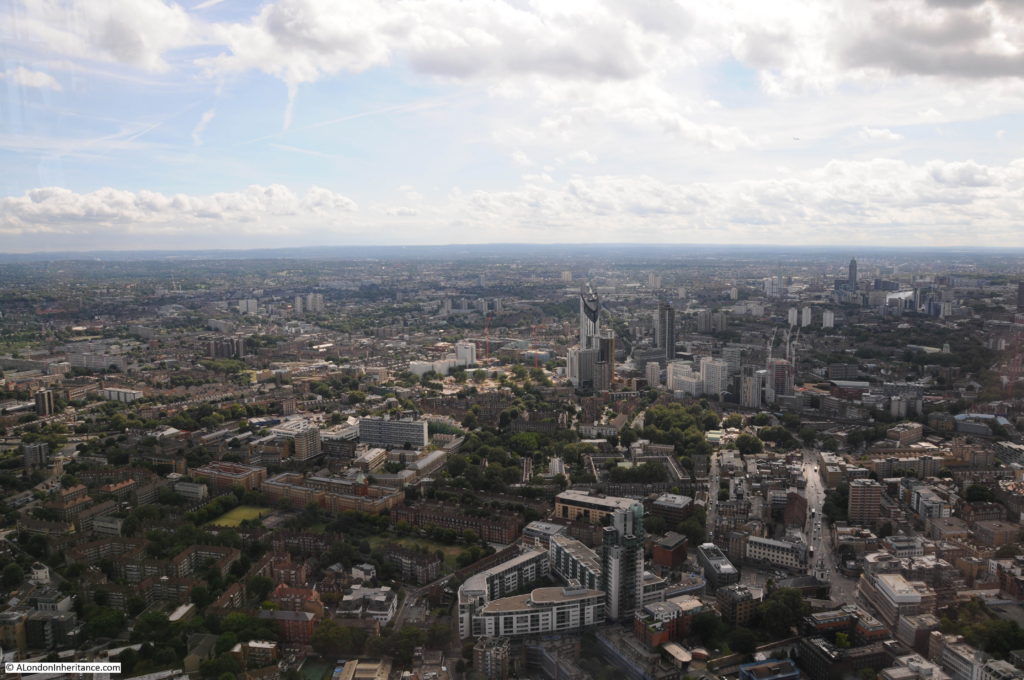



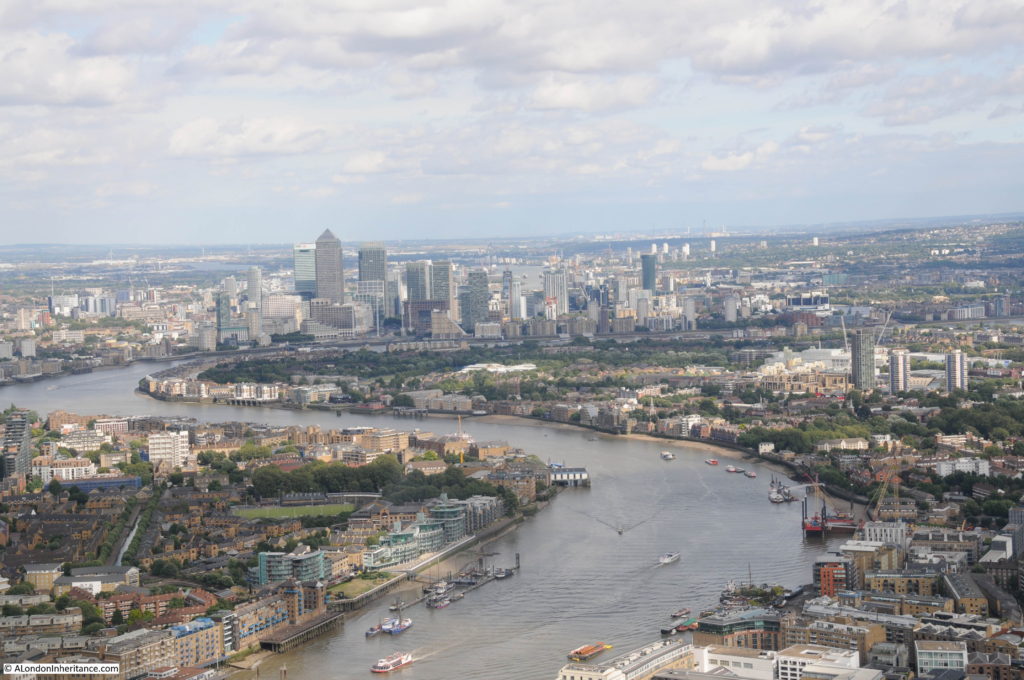



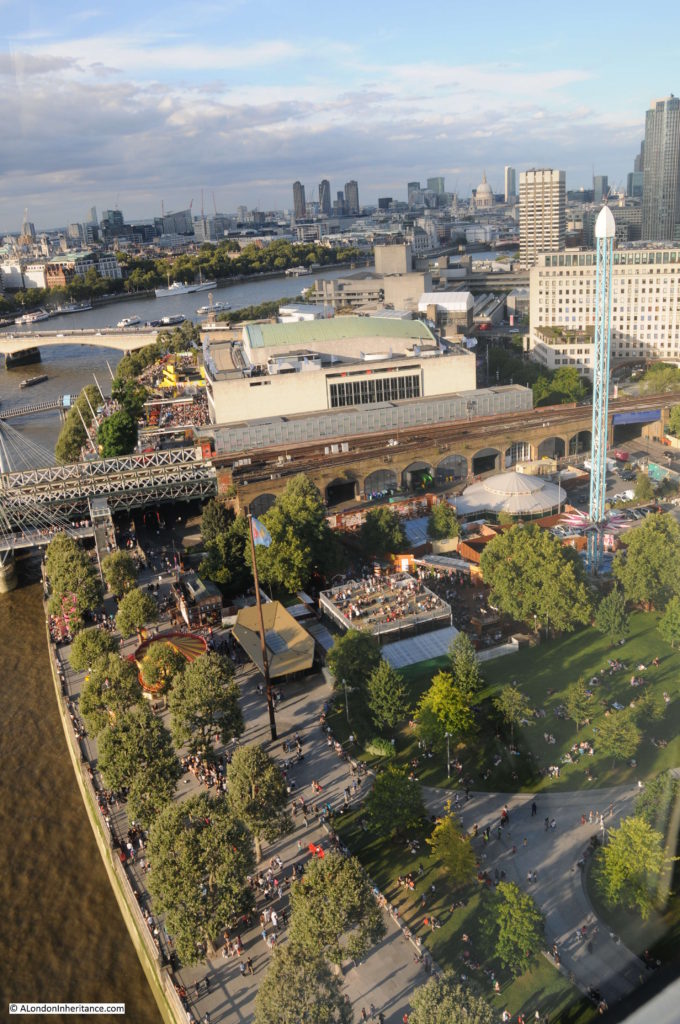
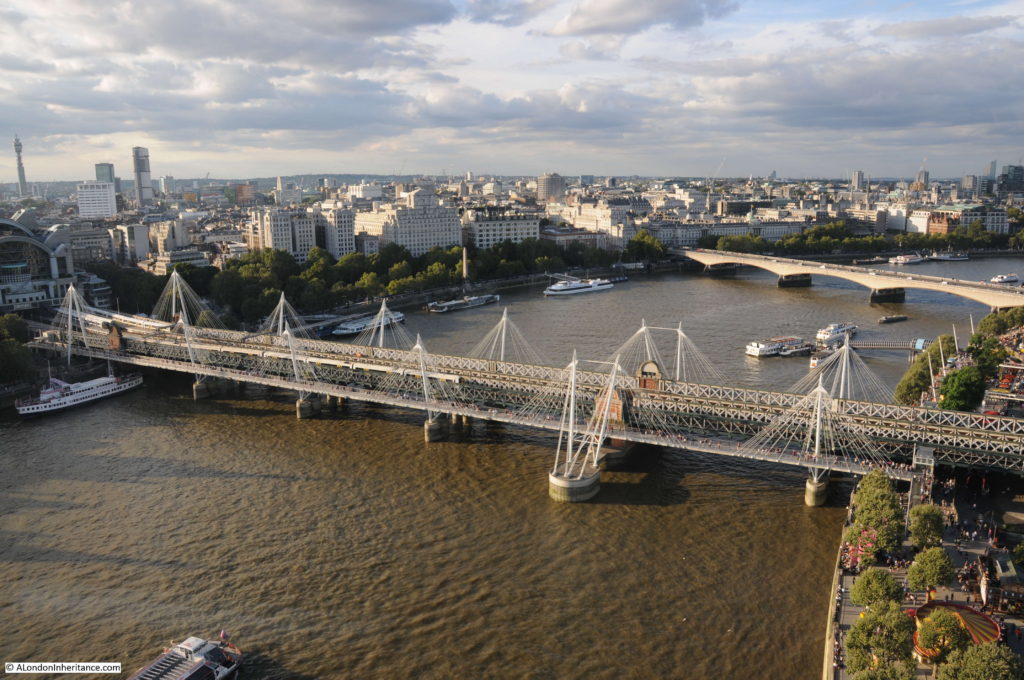
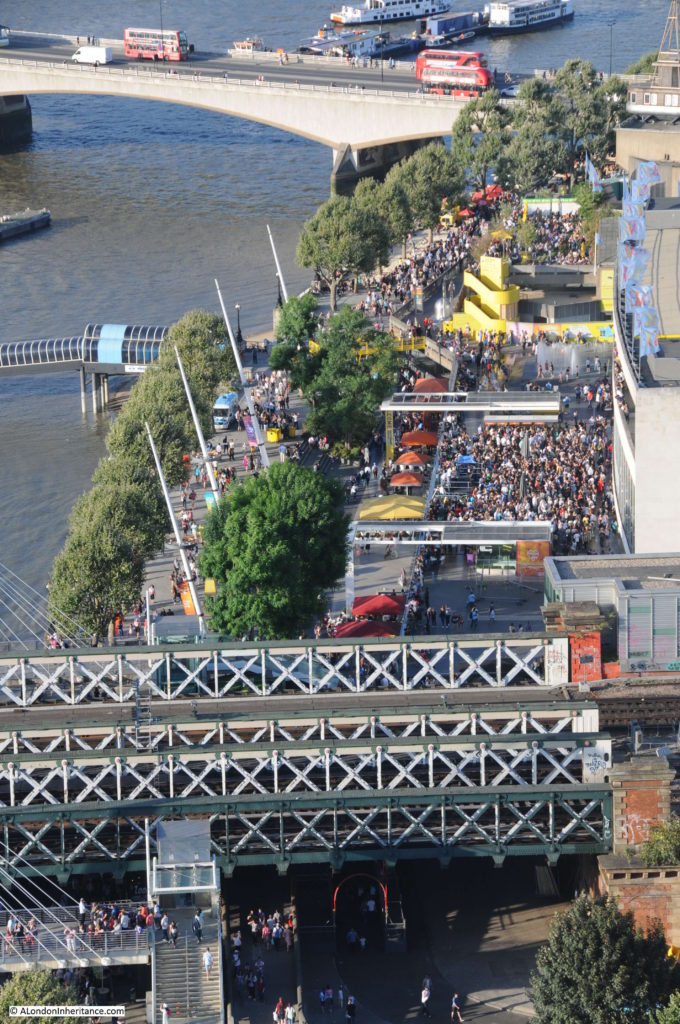

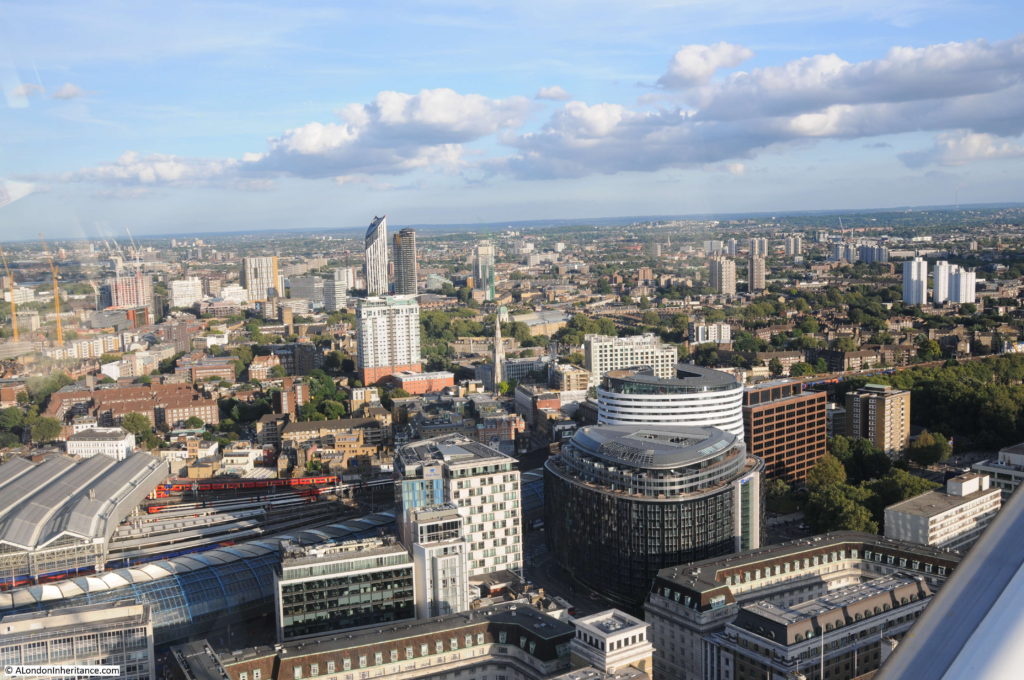
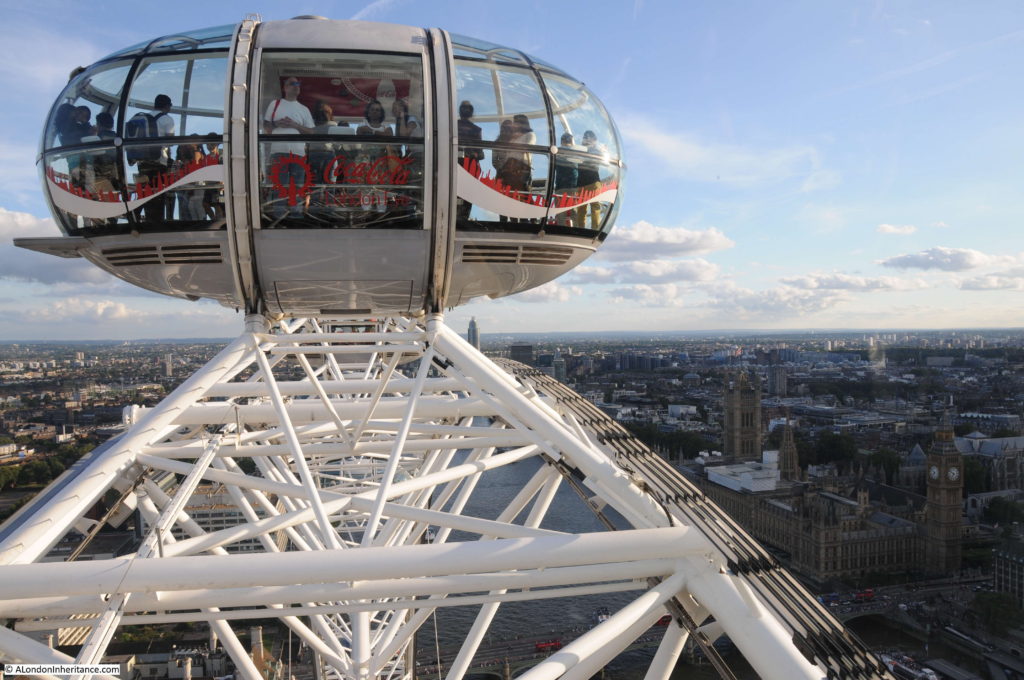
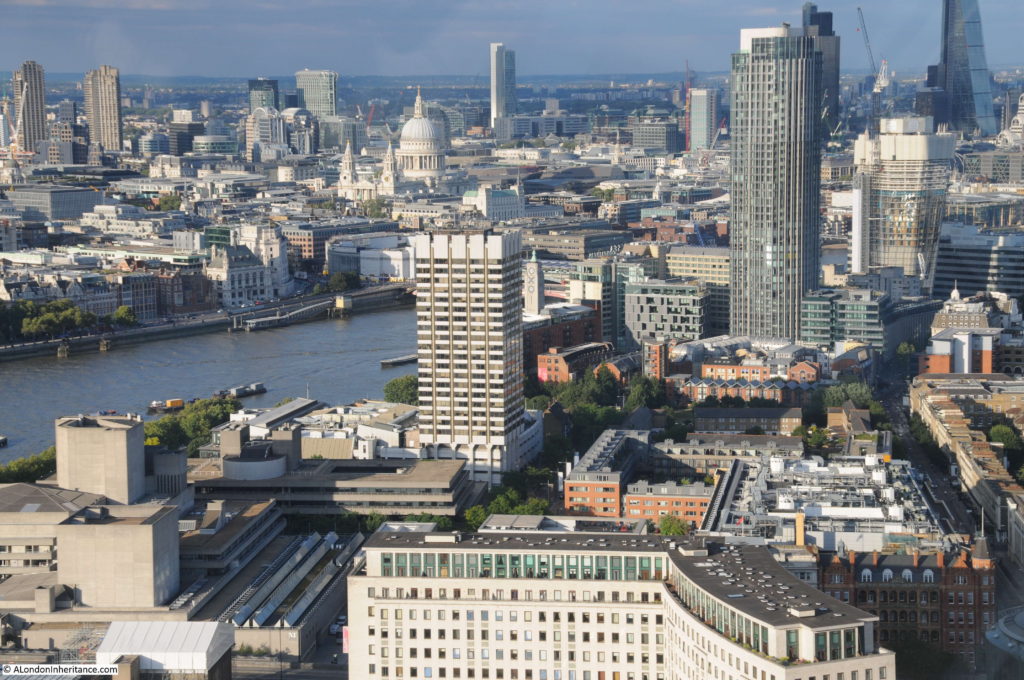
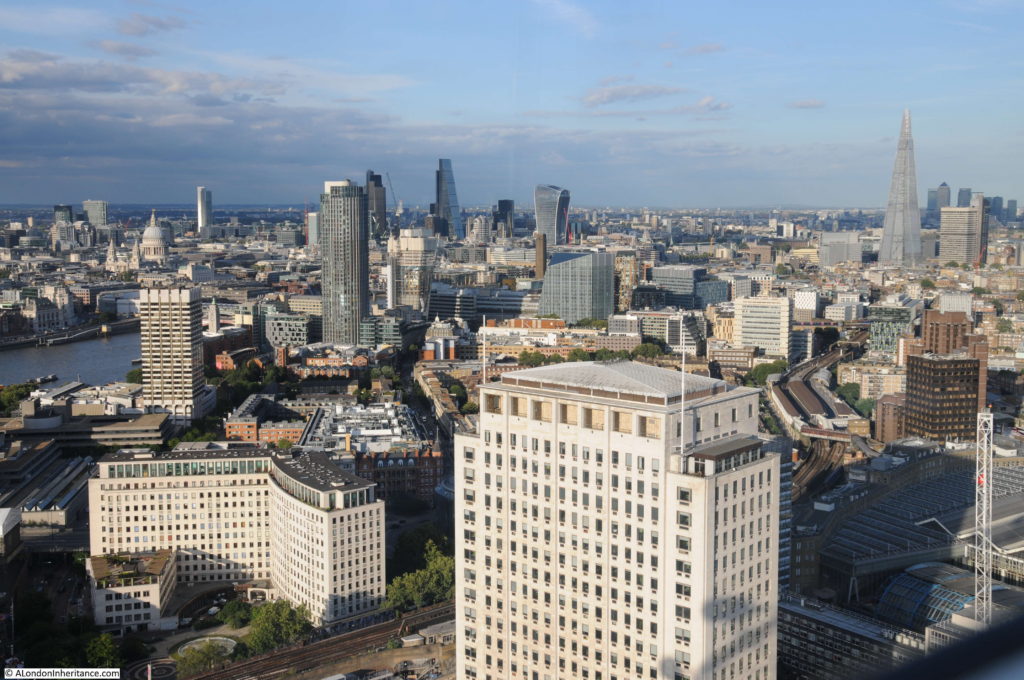
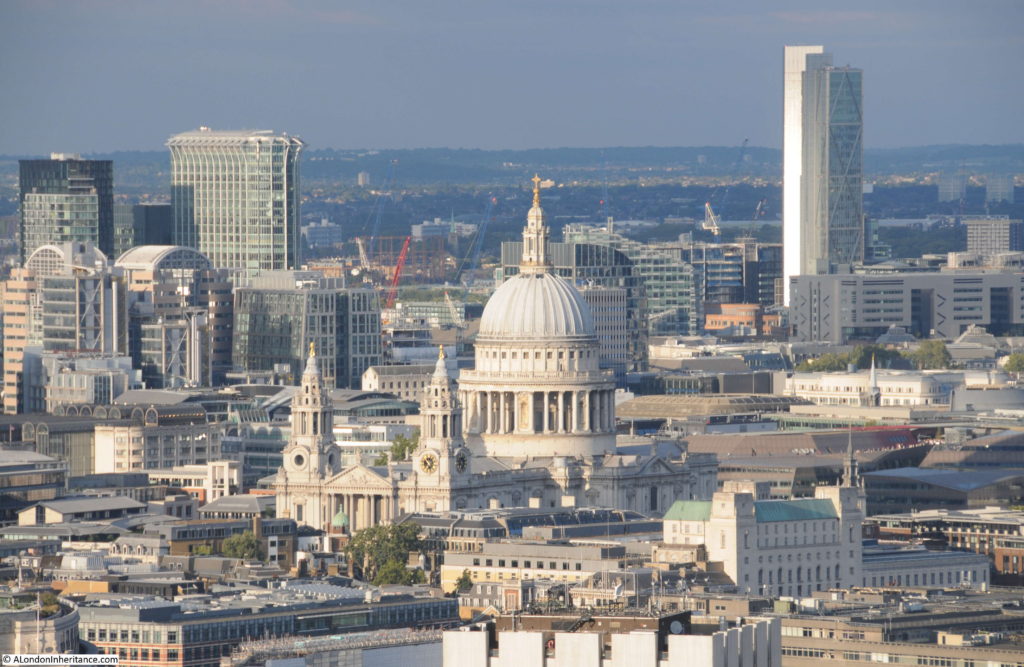
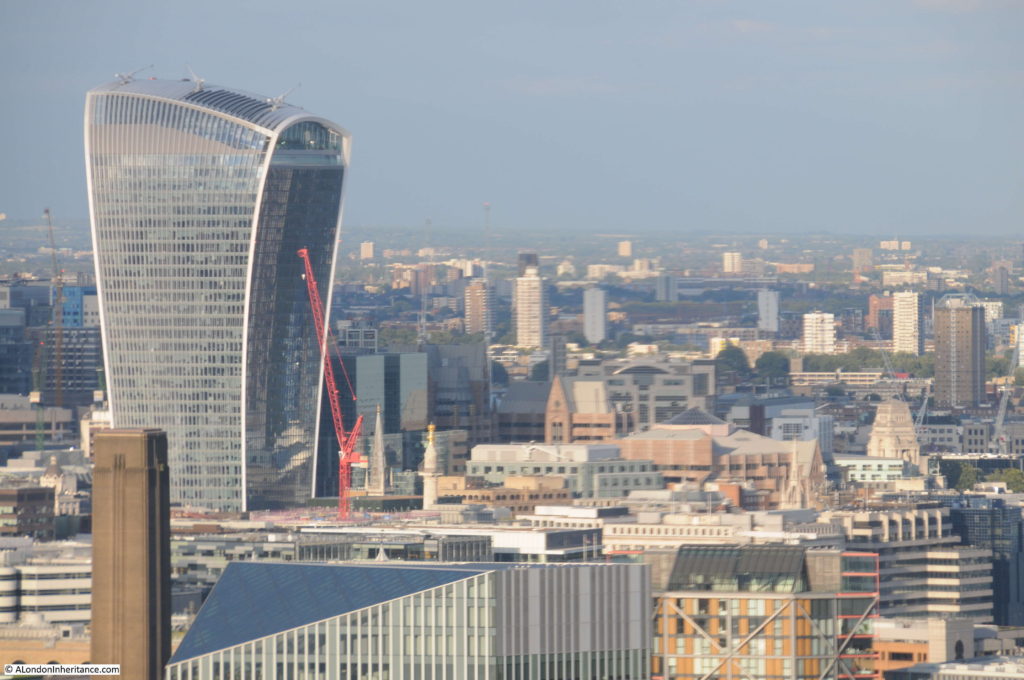


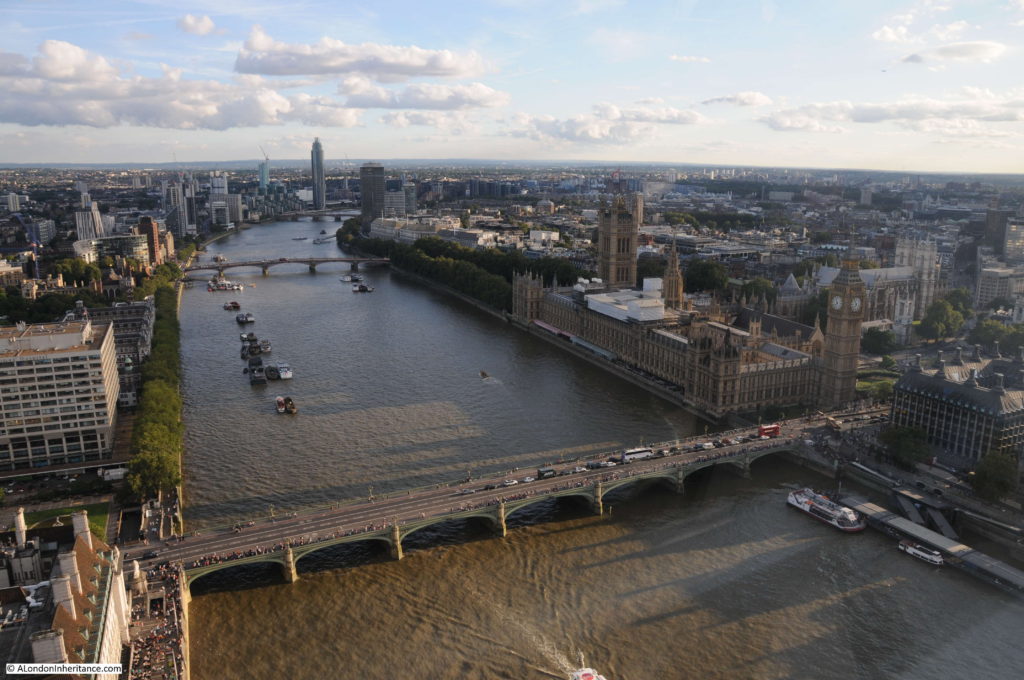
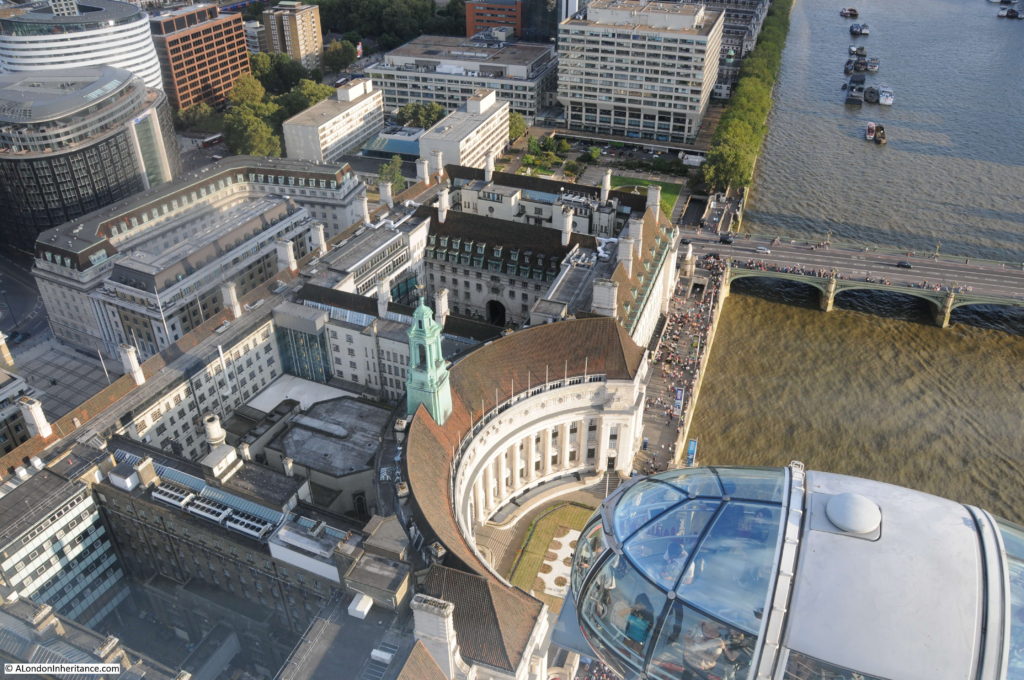
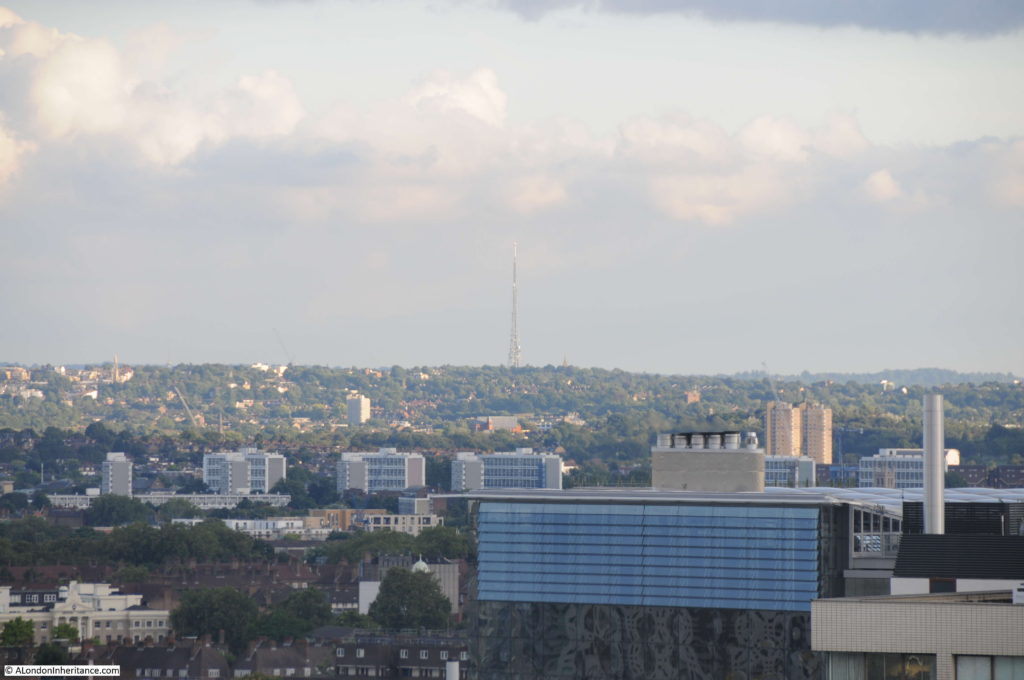
Amazing photos. Thank you so much for sharing them.
Absolutely fascinating ! Terrific photography. Thanks for this very interesting post.
All such brilliant images, thank-you.
I was particularly thrilled to see the second photo, looking down from The Shard ‘towards City Hall.’ The buildings in the foreground are the More London development on which I was lucky to have project-managed the installation of the façade access equipment (or window-cleaning cranes, to give them a less glamourous description) onto the two phases which can be seen.
On the left is More London Plot 1 comprising of three finger-shaped offices pointing towards the Tower of London. This was my first London project (in 2002 if my memory serves me right) and the engineering company that I worked for had won the contract to install the steel tracks on these roofs, then import from Munich a Building Maintenance Unit to operate from each. You can see two of the battleship grey BMUs parked up, one with its cradle resting across the tracks hidden under a protective cover.
On the right of the image is More London Plot 7 with a circular void at its centre. This 2008 project required a small BMU at a lower level overlooking Tooley Street (this is visible in the first image from the Shard, parked up on the left of the sedum roof) and a huge BMU on the main roof. The tracks for this larger machine can be clearly seen around the circumference of the central void, these were all straight galvanized steel beams cut at an angle on both ends to create the facetted layout. We were told at the time by the manufacturer that it was the BMU with the longest reach in the UK. It is seen parked up in the photo; but has a telescopic jib which extends to position the suspended cradle an incredible 35-metres from the centre of the tracks.
Such a really great experience working on the roofs of these buildings back in the 2000s, both in central London and at Canary Wharf. The last project I managed to get to site was Riverbank House (which you can see in Shard image #8, west of London Bridge, with another sedum roof). Soon afterwards I began work on the new 122 Leadenhall Street project – but sadly my career in this industry was curtailed when the Bankers broke the world economy in 2009, and I then read in the Metro that the Cheesegrater was being mothballed.
Thanks for sharing theyre a great bunch of photos